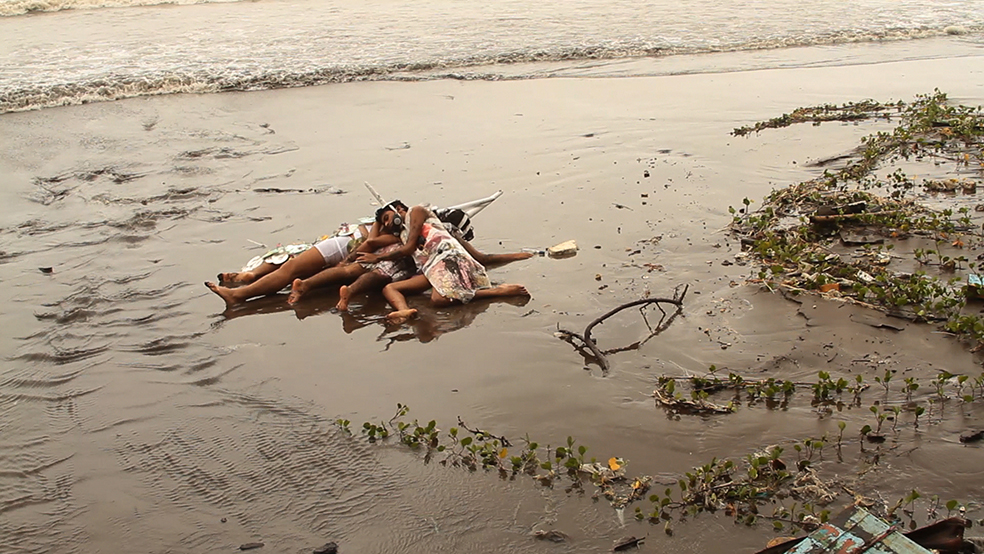
A still from “Between the Waves,” which Montclair State professor Anuj Vaidya worked on.
Photo courtesy of Anuj Vaidya
On Tuesday, Feb. 23, Montclair State University professor Anuj Vaidya spoke about experimental and non-narrative filmmaking as part of the Film Forum at the university.
This film forum was a little different from others, because it was more about the media practices that engage the porous borders of art and film, as well as the possibilities of digital media.
Vaidya introduced a new art video from India called “Other Species, Other Times.” After watching a series of seven short films which were experimental and non-narrative, viewers saw how this approach was different than a typical film with a plot. The short movies that were shown were “Logic of Birds,” “Man with Cockerel,” “Fjaka,” “Iceboat,” “Between the Waves,” “Forerunner” and “Night Noon.”
Before introducing the film to the audience, Vaidya talked about his life outside of filmaking. Vaidya teaches queer studies in the gender, sexuality and women’s studies program at Montclair State. He is also a media curator and an artist — he has quite the résumé.
Vaidya is one of the cinematographers for one of the short films, “Between the Waves.” He said that doing the cinematography was a lot of work, but it was worth it in the end.
“Logic of Birds” was a six-minute video in the “Other Species, Other Times” sequence that showed a woman who was lying on the street in a public plaza among pigeons. Vaidya told the audience that a lot of these actors were incredibly committed, and the actress that was in this particular video was one of them. “She was lying on that street for six hours straight,” he said. “Not one person approached her to see what was wrong.”
One of the other films, “Iceboat,” was about a child who rows a melting boat for about 12 minutes until it sinks. Several of these films did not really have a plot, but did have metaphorical imagery.
According to Vaidya, not everyone enjoys these kinds of movies, because they can be hard to be entertained by and to watch again for replay value. “Sometimes having to watch these movies can be boring,” he said. “Appreciating them is a process.”
When the screening was over, the audience appeared appreciative of the films’ concepts, but not their entertainment value. This then led to the filmmaker having to explain the importance and benefits of experimental and non-narrative filmmaking. He said that, in experimental filmmaking, there is lot more creative freedom. The filmmakers can convey messages through repetitive scenes, style and metaphorical imagery.
From Vaidya’s and other filmmakers’ perspectives, this type of filmmaking is unique and can challenge audience members to follow nontraditional stories in order to know what is going on. I will admit that I was in the same boat as most of the people in the audience, but I learned to understand these films are still a form of art. This also helped to open people’s minds so they could see the bigger picture.
Although this film forum was different than others, it was quite an experience to have.


